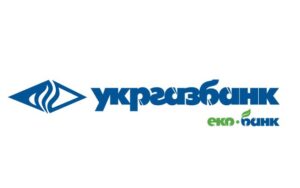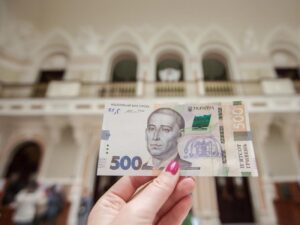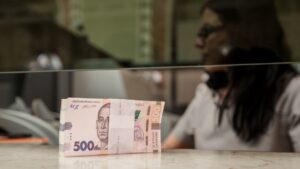
Canada’s draft federal budget for 2022 (starts July 1), presented by Deputy Prime Minister Chrystia Freeland in Parliament on Thursday, provides for the continuation of active financial support for Ukraine, in particular, the allocation of CAD500 million (almost $400 million) of military assistance and CAD1 billion (almost $800 million) loans.
“Canadians support the brave people of Ukraine, who are fighting for their lives, for their sovereignty, for their own and for our own democracy,” reads the preamble to a separate “Support for Ukraine” section of the budget, posted on the Canadian Treasury website.
According to him, at the beginning of this year, Canada announced the expansion of Operation UNIFIER, the mission of the Canadian armed forces to provide military training and support to Ukrainian forces, under which since 2015 Canada has trained about 33,000 Ukrainian military and security forces, as well as the provision of military assistance to over CAD90 million
“The 2022 budget proposes to allocate an additional CAD500 million in 2022-2023 to provide additional military assistance to Ukraine,” the draft reads.
It clarifies that Canada is already providing military assistance, both lethal and non-lethal, and is also partnering with allies to share intelligence and provide support in enhancing Ukraine’s cybersecurity.
With regard to sanctions and holding Russia accountable, the draft 2022 budget announced the government’s intention to clarify the powers of the Minister of Foreign Affairs to confiscate and dispose of assets belonging to individuals and entities under sanctions.
The document states that to date, Canada has provided CAD145 million in humanitarian assistance and CAD35 million in development assistance to provide direct support to Ukrainians affected by the illegal Russian invasion, as well as loans totaling CAD620 million to support Ukraine’s financial stability, economic sustainability and governance reforms.
“The 2022 budget announced that Canada will offer up to CAD1 billion in new credit resources to the government of Ukraine through a new managed account for Ukraine at the International Monetary Fund (IMF) so that the government can continue its activities,” the draft reads.
It clarifies that Canada has worked with the government of Ukraine, the IMF and other member countries to establish this mechanism and encourage allies and partners to participate.
In addition, Canada recalled that since March 17, it has given permission to Ukrainian refugees and their closest relatives of any nationality to stay in Canada as temporary residents for up to three years with the right to work. They will also have access to additional support such as language training and career guidance services.
The federal government is also developing a special permanent residence program for Ukrainians with relatives in Canada.
“The government has provided new funding of CAD111 million over five years with CAD6 million in subsequent years to implement these new immigration measures,” the draft states, including CAD78 million for this purpose in the draft 2022 budget.

Ukrainian banking institutions for the period from mid-March to April 5 issued loans to farmers as part of the state program to support the sowing campaign in the context of the Russian military invasion of Ukraine for a total of UAH 1.79 billion, according to the website of the Ministry of Agrarian Policy and Food of Ukraine on Wednesday.
At the same time, it is specified that currently 80% (UAH 1.5 billion) of the provided borrowed funds were portfolio guarantees, and 900 agricultural producers from different regions of the country received access to financing.
Most of all loans for the specified period were attracted by farmers of Kirovohrad region – UAH 405 million (22% of the total), Vinnitsa region – UAH 365 million (20.4%), Dnepropetrovsk region – UAH 267 million (14.9%), Odessa region – UAH 161 million (9%) and Lviv – UAH 159 million (8%) regions.
According to the Ministry of Agrarian Policy, loans up to UAH 60 million under this program are issued at 0% per annum (under the state financial support program “Affordable loans 5-7-9%”). The term of such lending is up to 6 months, and after its completion, the interest rate for borrowers will be 5% per annum. Agrarians falling under the definition of an agricultural producer can use the loan.
“Lending to farmers is one of the main priorities of banks. The conditions for granting loans are simplified as much as possible. Moreover, banks lend to our farmers even in those regions where there are battles, because they need to sow, and (…) people go out to their fields,” the ministry quotes its head of Nikolai Solsky.
The agency clarified that the government program to support the sowing campaign is being implemented by the Cabinet of Ministers, the Ministry of Agrarian Policy, the Ministry of Finance, the Ministry of Economy, the National Bank and the banking sector.
As reported, at the end of March, the Cabinet of Ministers of Ukraine expanded the procedure for issuing guarantees for agricultural producers on loans on a portfolio basis for the purchase of the resources they need for the sowing campaign in 2022, since due to the Russian military invasion of Ukraine, part of the farmers lost working capital for carrying out spring work.
Thus, within the framework of portfolio lending to agricultural producers, they will be able to obtain loans for the purchase of fertilizers, plant protection products, pesticides and agrochemicals, fuel, spare parts for agricultural equipment, as well as for replenishment of fixed assets and intangible assets, wages, rent of real estate and movable property, works and services for its operations.
The total budget of this program to support the 2022 sowing season is UAH 50 billion.

The number of loans issued by state-owned Ukrgasbank (Kyiv) increased by 22% in 2021, the bank’s press service reported.
According to the report, the bank’s loan portfolio increased by UAH 7 billion last year.
“In 2021, more than 300 eco-loans worth UAH 2 billion were issued, which ensured a reduction in CO2 emissions by 140,000 tonnes. Among them, about UAH 500 million are sustainable development projects,” Andriy Kravets, the head of the bank’s board of directors, said.
Ukrgasbank was founded in 1993. The state, represented by the Ministry of Finance, owns 94.94% of the shares of the financial institution.
According to the data of the National Bank of Ukraine (NBU), as of October 1, 2021, Ukrgasbank ranked fifth in terms of total assets (UAH 121.19 billion) among 71 banks operating in the country.

Finance Minister Serhiy Marchenko and World Bank Regional Country Director for Belarus, Moldova and Ukraine Arup Banerji have signed a loan agreement for EUR 300 million in order to continue implementing economic recovery projects, the Finance Ministry said.
“The loan is the result of structural reforms in the areas of demonopolizing key sectors of the economy, strengthening anti-corruption institutions, improving the work of land and capital markets, as well as improving the social welfare system,” the ministry said on its website on Monday.
As part of further cooperation between Ukraine and the International Bank of Reconstruction and Development, the World Bank Country Partnership Strategy for 2022-2025 is being developed. Its goal is Ukraine’s achievement of sustainable economic recovery and growth. The priorities of the strategy will be energy, agriculture, and transport system, the Ministry of Finance said.
Ukraine received its first loan from the IBRD in the amount of $350 million for the development policy in the field of economic recovery in June 2021.

The decrease in the share of non-performing loans (NPL) in the banking sector of Ukraine to 35% from 36.3% in August was facilitated by the correct regulatory policy of the National Bank and less risky new loans that banks are issuing now, the founder and partner of the group of companies, Andriy Volkov, commented on the statistics of the central bank for the specified month to the Interfax-Ukraine agency.
He considers the decline in the share of problem loans in the banking system to be a natural process for several reasons. First, the NBU introduced rather strict rules for the assessment and provisioning of the loan portfolio, after which the banks began fruitful work on restructuring NPLs, collecting them or selling them to specialized companies. Secondly, the country is gradually resuming lending – both retail and corporate. However, due to the filing of the banks’ risk management and NBU requirements, it is now less risky and produces much fewer non-performing loans. Accordingly, the portfolio of banks began to grow again, which means that the share of old problem debts began to decline.
According to Volkov’s forecasts, this trend will continue, and the share of non-performing loans will continue to decrease.
At the same time, he drew attention to where these troubled debts are concentrated.
“Commercial banks, for the most part, have resolved or are successfully solving issues with non-performing loans: they have restructured more or less “live” debts or debts associated with the shareholders and the bank management, collected collateral from non-performing loans, sold or are selling loans, with the collection of which they cannot cope independently. Therefore, the main volume of bad debts was concentrated in state banks. And this is the next point of development for the Ukrainian NPL market, in which changes must take place – the system of working with problem debts of state banks will change or, more realistically, the sale of bad debts will begin, because without this, neither development nor sale of state-owned banks is possible,” the financier believes.
In addition, according to him, solving problems with problem debts in state banks is also on the agenda of international creditors and donors of Ukraine. Therefore, the government as a shareholder, the NBU as a regulator, as well as the supervisory boards of state banks are forced to pay sufficient attention to them.

As of August 1, 2021, ten banks issued 1,917 loans to small, medium and micro-businesses (SME) through portfolio government guarantees totaling UAH 5.007 billion, the Ministry of Finance reported.
“Liabilities on the principal debt, which are partially secured by state guarantees on a portfolio basis, amounted to UAH 2.316 billion. This is about 59% of the total limit of guarantees provided in 2020 (UAH 3.93 billion),” the Ministry of Finance said on its website.
According to it, in July this year, banks provided 122 such loans for a total of UAH 735 million with a share of the state’s liabilities of UAH 306 million.
In terms of the number of loans issued, PrivatBank is in the lead – 945 loans for UAH 859 million in total, which is 100% of the limit of such guarantees provided to the bank in 2020. The second largest bank is Oschadbank – 680 loans for UAH 2.036 billion, according to the data of the Ministry of Finance.
“The program is in the greatest demand in Kyiv, where, in total, 151 loans were issued for UAH 542 million. In Lviv and Dnipropetrovsk regions, which are among the top three, these figures are 136 loans (UAH 340 million) and 129 (UAH 300 million),” the ministry said.
By type of economic activity, most of the loans, partially secured by state guarantees on a portfolio basis, were issued in the areas of wholesale and retail trade (675), agriculture (558) and processing industry (277).